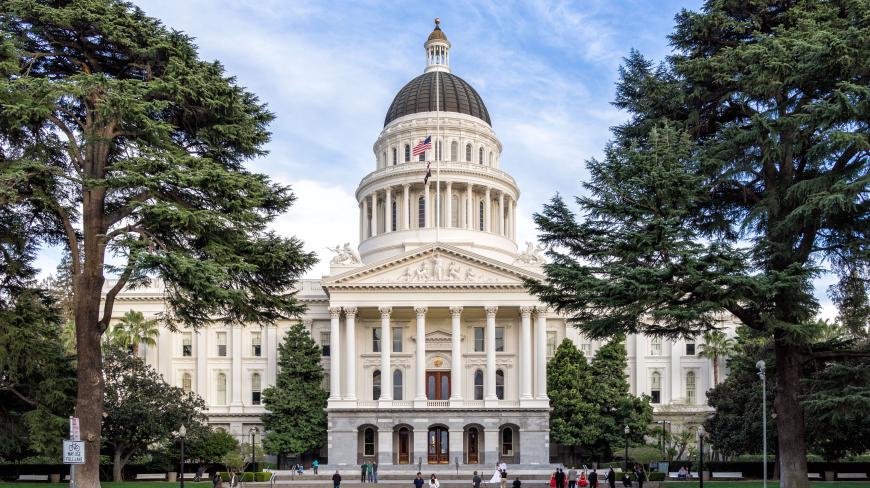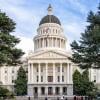
How’s this for unexpected news? There’s something positive to report about government support for the arts!
No, it’s not from the federal government, thrifty when it comes to the arts and humanities even at the best of times — and certainly not generous now, when orders from the Department of Government Efficiency are beginning to impact the National Endowment for the Arts, shutting down grants for underserved communities, among other developments.
For reference, the current budget for the NEA, the major federal agency supporting the arts, is $210 million — 0.003 percent of the $6.8 trillion national budget.
It’s difficult to find U.S. arts organizations, however large or important, that receive NEA grants of much significance. The contrast with most European countries, as well as with South Korea, Japan, and China, is devastating.
For example, South Korea’s cultural appropriation is $5.3 billion annually for a country with one-sixth the population of the U.S. (though that dollar amount covers sports and tourism as well). According to a 2000 NEA report, Finland’s estimated $91 per-person arts allocation contrasted at the time with America’s $6 … and that was well before potential DOGE cuts.

Where’s the good news?
It’s in a new announcement from Sacramento, where the state of California is dealing with an expected $55 billion deficit, and from San Francisco City Hall, where Mayor Daniel Lurie’s new administration is stuck with a $867 million deficit for the next two years. And yet ...
In Sacramento, the state’s Performing Arts Equitable Payroll Fund is set to launch this year with a $12.5 million budget, while funding to the California Arts Council (CAC) has continued with an annual reduction of “only” $5 million (instead of the proposed $10 million). The CAC’s full $26 million budget is slated to be restored beginning in 2026–2027.
Those advocating continued state support point to the impact the arts have on the California economy — comprising more than 740,000 jobs, constituting 7.7% of the state GDP — saying “the field routinely subsists on a very tiny slice of a very large pie.”
A spokesperson representing the advocacy organization California for the Arts explained that the Performing Arts Equitable Payroll Fund helps small nonprofit organizations pay employees:
“Administered by the California Office of the Small Business Advocate [CalOSBA], the payroll fund is a new model for arts funding that is expected to provide as many as 20,000 full-time, part-time, and seasonal employment opportunities annually.
“While people think that the entertainment industry is [just] Hollywood, it’s actually California’s entire creative ecosystem that makes the state a national arts leader and drives our economy. This is just the boost the live-arts sector needs after COVID-19 and years of underinvestment.”
CalOSBA Director Tara Lynn Gray said, “California is leading the way to show continued support for our performing arts sector. This program makes the point that art work is indeed real work. By reimbursing payroll expenses, we are helping make sure that performers and backstage staff can bring home paychecks so that the show can go on in communities across the state.”

In a press release put out by CA for the Arts, Brooke Shields, president of Actors’ Equity Association, added: “We’ve seen entire communities revitalized by a robust arts scene, and the Performing Arts Equitable Payroll Fund is going to help that happen in towns big and small, all over the state.
“Investing in local theaters means investing in local economies. Studies show that the average nonprofit theatergoer spends about $38 more than their ticket on their night out. When we can ensure that these theaters have the budgets to pay more workers living wages, the artists thrive, but beyond that, everyone feels it.”
Approximately 300 organizations in the state, including nonprofit theater companies, dance companies, choral groups, presenters, venues, and local arts councils that produce performances, are expected to receive funding.
Nonprofit performing arts organizations with adjusted gross revenue under $2 million are eligible. The fund will reimburse a portion of employee payroll costs on a quarterly basis, using a tiered system where the smallest organizations receive the highest percentage of reimbursement.
Nonprofits can register for informational webinars about the new fund on the CA for the Arts website. Applications open on March 10.

In San Francisco, a major source of support is Grants for the Arts (GFTA), which administers the 1.5 percent allocated from the city’s hotel tax to arts and culture organizations.
In spite of San Francisco’s major deficit problems, GFTA and the San Francisco Arts Commission have maintained support levels. GFTA is also dealing with the aftermath of some serious criticism.
Lorraine Cawili-Thy, GFTA’s program and operations officer, told SF Classical Voice: “[Our] current budget is $14,172,080, awarding [grants to] 266 arts and culture organizations in San Francisco.
“This year, in response to grantee feedback, GFTA for the first time implemented a two-year grant cycle. GFTA is currently in year one of the two-year grant cycle. The city and GFTA anticipate releasing the next round of grants in early 2026.”
Could the city’s budget deficit impact the arts and culture?
“Arts and culture organizations are fundamental parts of our communities,” Cawili-Thy responded, “enriching the city’s cultural fabric and bolstering our economic recovery. The city remains committed to supporting arts and culture in San Francisco through Grants for the Arts and other arts and cultural initiatives.”
Cawili-Thy also reiterated the legality and procedures behind the grants:
“Proposition E, passed by the voters in 2018, allocates a portion of hotel tax revenue to Grants for the Arts. GFTA actively monitors incoming hotel tax revenue and works closely with the Controller’s Office [of San Francisco] to determine funding allocations that ensure the most equitable access to GFTA’s granting budget.”
The SF Arts Commission’s current grant budget of $15 million has gone toward supporting 159 local artists and arts nonprofits and seven cultural centers in the city.




